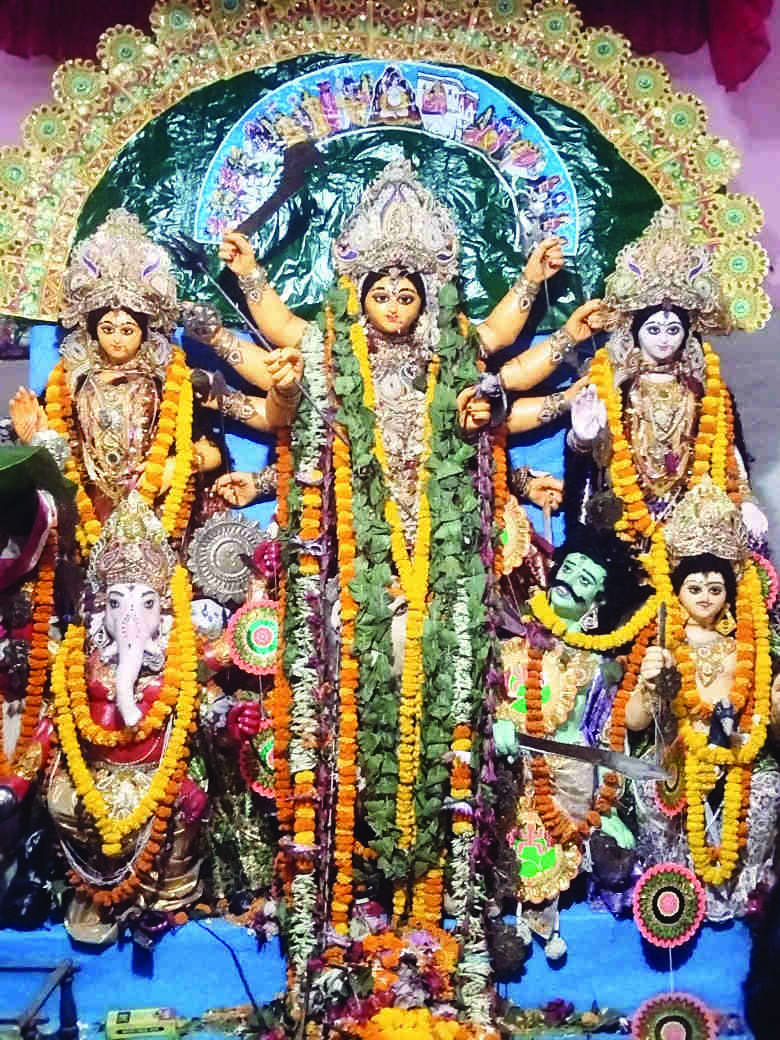Barasat Shiber Kota's Durga Puja has a Jodhabai connect

Kolkata: A 400-year-old Durga Puja introduced at Dakshinpara Shiber Kota in the early 17th century by Shankar Chattopadhyay, one of the main lieutenants of the then Jessore king Pratapaditya, not only buzzes with rich historical fervour but also showcases women emancipation and, therefore, gains relevance in the present age and time as well.
The Puja is now hosted by Shankar's 12th descendants in North 24-Parganas' Barasat aiming to celebrate womanhood through a unique tradition where widows are allowed to participate in 'Devi Boron' and 'Sindoor Khela'.
Known as 'Chatterjee Barir Pujo', it has broken the taboo of preventing widows from participating in 'Devi Boron'. It has always been an eye-catcher for the Puja enthusiasts in the area not because of its past grandeur but because of its traditional ways of celebration.
The descendants of Shankar claim that the Puja was started following the request of Jodhabai, the famous Mughal queen. Hence, the name — Jodhabai's Durga Puja. Though there is no documented history that connects it with the Mughal empress, the message was passed down from one generation to another that Jodhabai was the chief patronage of this Durga Puja.
Sraboni Chatterjee, a present family member who is a teacher by profession, says that the Puja was started here in or around 1607 when Mughal emperor Jahangir's accession to the throne had already taken place.
Shankar Chattopadhyay was the general of King Pratapaditya when Man Singh's Mughal army attacked Bengal and defeated the ruler. It is said that Shankar was held captive, taken to Agra and imprisoned. Sraboni said that Jodhabai was impressed by the chanting of Sanskrit verses by Shankar during his imprisonment and she had decided to free the Hindu general. He was later released by Jahangir following Jodhabai's persuasion.
According to Sraboni, Jodhabai urged Shankar to worship Devi Durga after his return to the native place. Shankar had been carrying dainty Radha and Krishna idols while coming from Agra to Jessore. While taking a bath in the Yamuna, the Krishna idol was swept away by the current and Shankar had to return only with the Radha idol. He settled in Barasat and did not set up any new Krishna figure. He decided to celebrate Radha's solitary existence in his family temple by worshipping her as 'Bidhoba Radha' or 'widow' Radha. This idol is still with the family and is worshipped alongside the Durga idol during all five days of the Puja. It is said that Jodhabai used to send her offerings to this Puja regularly.
"Idol-making starts here on the day of Janmashtami. The 'kathamo pujo' is done at the family temple where a 400-year-old Shiva Linga is enshrined. Known as Bhubaneshwar Shiva, this Shiva linga is said to have been brought here by Shankar's great-grandson, Ram Kishore Tarka Bapish from Odisha many years ago. Pujas are performed here both through Vaishnava and Shakta traditions. Despite its rich heritage, the Puja claims credit for giving women their dignity several centuries back," said Sraboni.
It is often also claimed that Shankar, while in exile, had sought permission to conduct 'tarpan' ahead of the Durga Puja, but his request was turned down by Jahangir. He started fasting as a mark of protest. Jodhabai, who retained her religion as a Hindu, heard about Shankar and came to his rescue. She also witnessed the rituals offered by Shankar during 'tarpan'.



